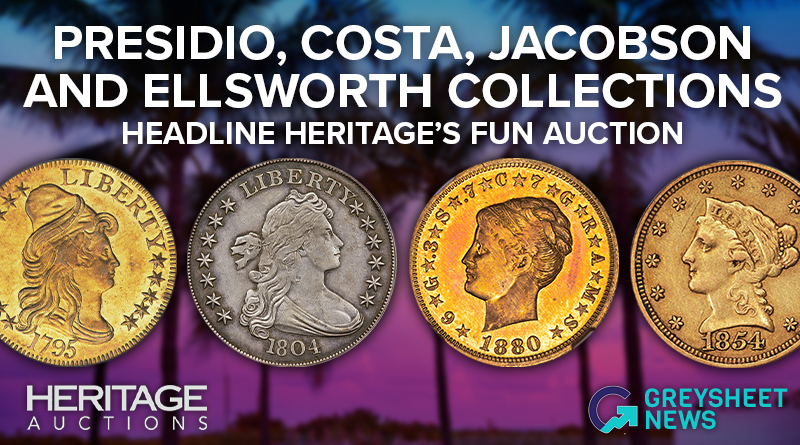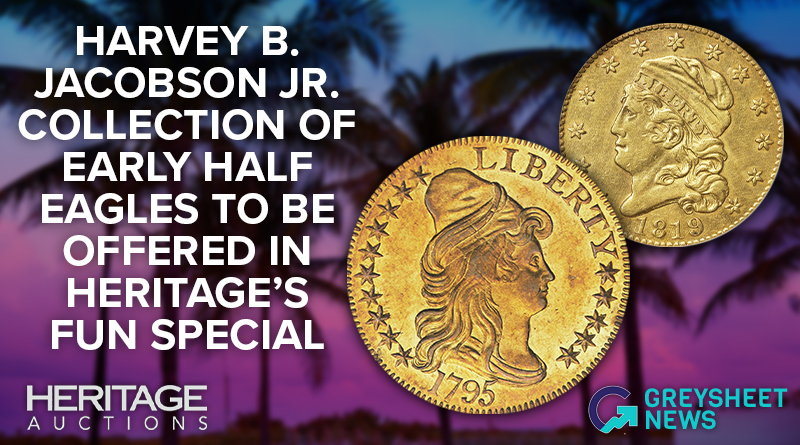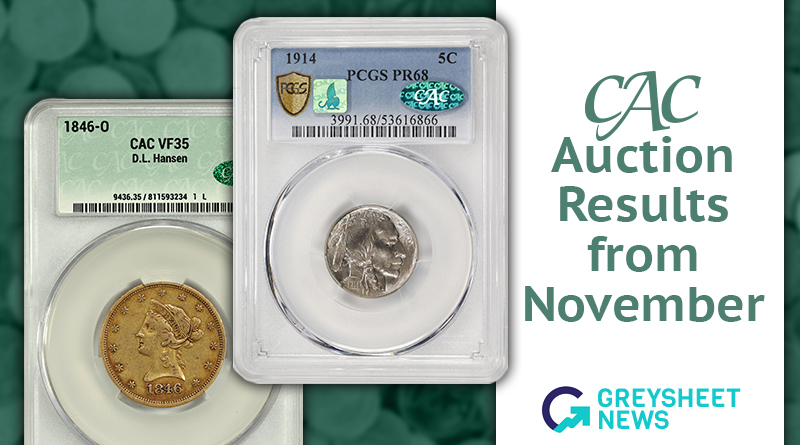Greysheet & CPG® PRICE GUIDE
- U.S. Coins /
- Pattern Coinage /
-
Patterns (1854) Values
Year
Sort by
About This Series
History and Overview
In 1854, pattern activity continued to emphasize the modification of the large copper cent, a process that had been ongoing since 1850. In 1853, several distinctive designs were created, including one reduced from an 1854 silver dollar die and another with Gobrecht’s Flying Eagle design as used on certain pattern half dollars of 1838 (for example, J-73). In addition, regular dies for the 1854 silver half dime were used to strike impressions in German silver.
The first cent in the listing (J-156) is one of the most interesting in the series. The obverse features stars surrounding the seated figure of Liberty, with the date below. This die was made by the transfer process using a lathe, in which a stylus was impressed in a slow spiral on the obverse of a regularly struck 1854 silver dollar, in the process showing many transfer lines and irregularities, but reducing the motif to a much smaller size. The crossbar of the 4 is not evident, making the date appear as “1851.”
A larger suite of pattern cents comprises the head of Liberty taken from the hub or punch used to create the motif for contemporary Braided Hair large copper cents, with the date 1854 below, without stars, and on a reduced-diameter planchet. The reverse of these pieces is similar in concept to those made for circulation, but with smaller letters and smaller diameter. Then follow the Flying Eagle cents of 1854, for which James B. Longacre copied Gobrecht’s motif, in this instance an eagle first known to have been used on half dollars of 1838 (differing slightly in execution from that on the Gobrecht silver dollars of 1836). The reverse is similar to the foregoing.
Collecting Perspective
A trial piece of the regular half-cent dies in a special copper alloy (J-155) is sufficiently rare as to be unobtainable.
Among the pattern cents of 1854, the Liberty Seated variety turns up with some frequency. All of these have very rough and irregular obverse surfaces due to the way the die was prepared. Liberty Head and Flying Eagle pattern cents exist in fair numbers and are readily collectible, although some varieties are elusive. Many were restruck, although the difference between restrikes and originals is not well delineated in the literature nor is it often mentioned in sale descriptions. For varieties J-160 to J-165, pieces listed in bronze are probably all restrikes, if, indeed, they were made in bronze, as this metal was not standard at the Mint in the 1850s.
Among the issues J-160 through J-165, there are two different obverse dies (Liberty Head and Flying Eagle), and three different styles of reverse wreaths, as delineated in the descriptions below. Most numismatists aspire to collect simply one example of each obverse type. Thus far, the wreath differences have not attracted much attention.
The final piece in the listing is a striking from regular half dime dies but in German silver, which is exceedingly rare.
Catalog Detail
Legal Disclaimer
The prices listed in our database are intended to be used as an indication only. Users are strongly encouraged to seek multiple sources of pricing before making a final determination of value. CDN Publishing is not responsible for typographical or database-related errors. Your use of this site indicates full acceptance of these terms.



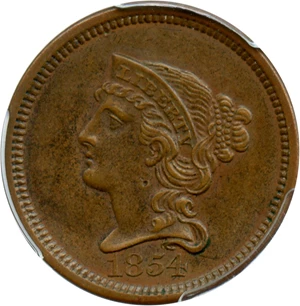





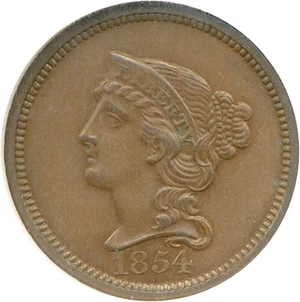
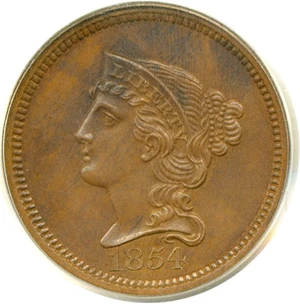
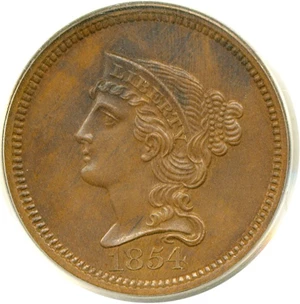
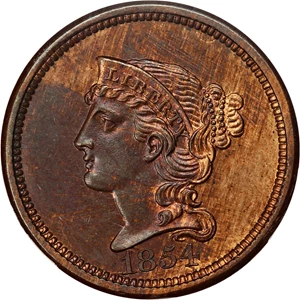





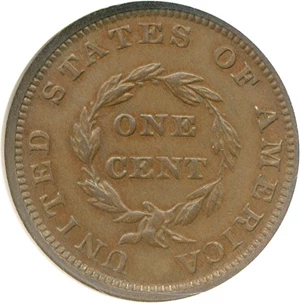
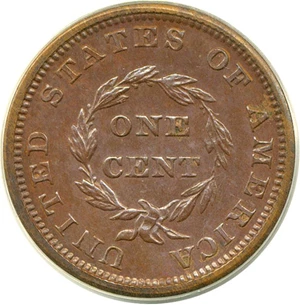

From the Greysheet Marketplace
Buy Now: $3,695.00
Buy Now: $2,890.63
Buy Now: $120,000.00
Buy Now: $38,900.00
Buy Now: $5,500.00
Buy Now: $37,000.00
Buy Now: $3,121.88
Buy Now: $37,000.00
Buy Now: $31,500.00
Buy Now: $125,000.00
Related Stories (powered by Greysheet News)
View all news
Greysheet Catalog Details
History and Overview
In 1854, pattern activity continued to emphasize the modification of the large copper cent, a process that had been ongoing since 1850. In 1853, several distinctive designs were created, including one reduced from an 1854 silver dollar die and another with Gobrecht’s Flying Eagle design as used on certain pattern half dollars of 1838 (for example, J-73). In addition, regular dies for the 1854 silver half dime were used to strike impressions in German silver.
The first cent in the listing (J-156) is one of the most interesting in the series. The obverse features stars surrounding the seated figure of Liberty, with the date below. This die was made by the transfer process using a lathe, in which a stylus was impressed in a slow spiral on the obverse of a regularly struck 1854 silver dollar, in the process showing many transfer lines and irregularities, but reducing the motif to a much smaller size. The crossbar of the 4 is not evident, making the date appear as “1851.”
A larger suite of pattern cents comprises the head of Liberty taken from the hub or punch used to create the motif for contemporary Braided Hair large copper cents, with the date 1854 below, without stars, and on a reduced-diameter planchet. The reverse of these pieces is similar in concept to those made for circulation, but with smaller letters and smaller diameter. Then follow the Flying Eagle cents of 1854, for which James B. Longacre copied Gobrecht’s motif, in this instance an eagle first known to have been used on half dollars of 1838 (differing slightly in execution from that on the Gobrecht silver dollars of 1836). The reverse is similar to the foregoing.
Collecting Perspective
A trial piece of the regular half-cent dies in a special copper alloy (J-155) is sufficiently rare as to be unobtainable.
Among the pattern cents of 1854, the Liberty Seated variety turns up with some frequency. All of these have very rough and irregular obverse surfaces due to the way the die was prepared. Liberty Head and Flying Eagle pattern cents exist in fair numbers and are readily collectible, although some varieties are elusive. Many were restruck, although the difference between restrikes and originals is not well delineated in the literature nor is it often mentioned in sale descriptions. For varieties J-160 to J-165, pieces listed in bronze are probably all restrikes, if, indeed, they were made in bronze, as this metal was not standard at the Mint in the 1850s.
Among the issues J-160 through J-165, there are two different obverse dies (Liberty Head and Flying Eagle), and three different styles of reverse wreaths, as delineated in the descriptions below. Most numismatists aspire to collect simply one example of each obverse type. Thus far, the wreath differences have not attracted much attention.
The final piece in the listing is a striking from regular half dime dies but in German silver, which is exceedingly rare.
Catalog Detail
Legal Disclaimer
The prices listed in our database are intended to be used as an indication only. Users are strongly encouraged to seek multiple sources of pricing before making a final determination of value. CDN Publishing is not responsible for typographical or database-related errors. Your use of this site indicates full acceptance of these terms.



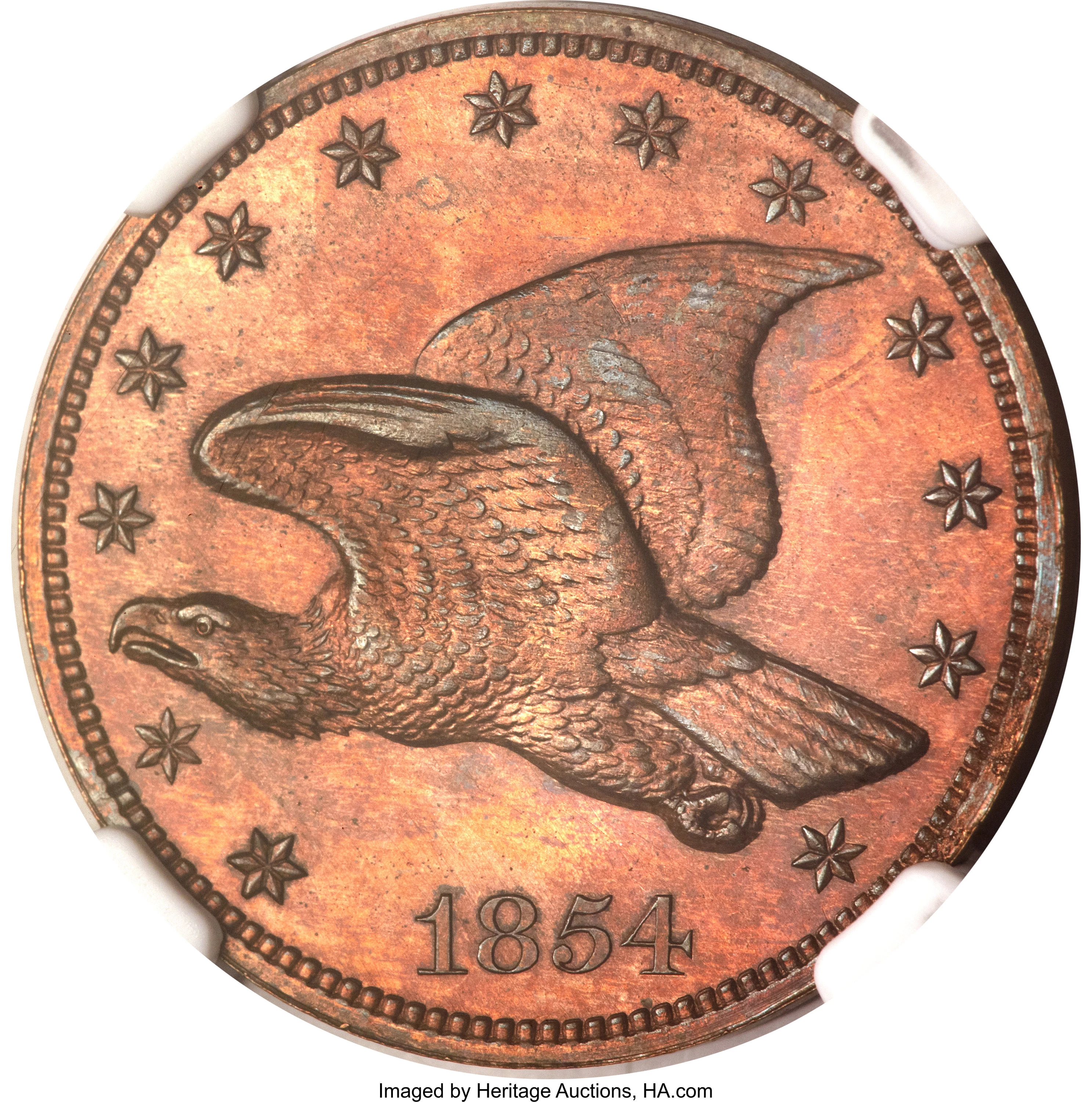






 Loading more ...
Loading more ...









